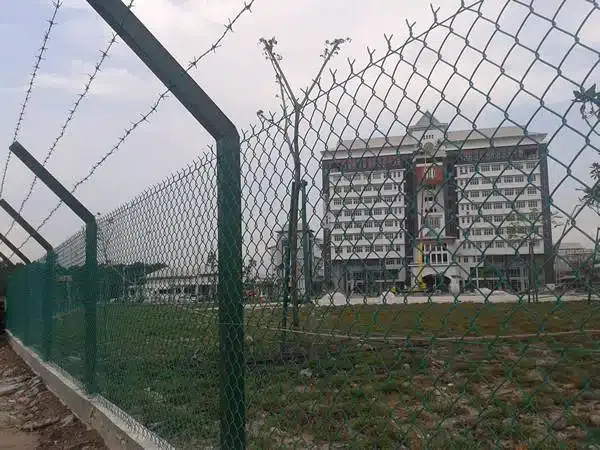May . 31, 2025 22:56 Back to list
Custom Weld Mesh Solutions Durable & Tailored Designs
- Exploring the core applications and versatility of specialized wire mesh products
- Technical specifications and structural integrity analysis
- Comparative evaluation of leading fabrication methodologies
- Material science considerations for different environments
- Industry-specific implementation case studies
- Total cost of ownership versus standard solutions
- Implementation workflow and project planning

(custom weld mesh)
Unlocking Innovation Through Custom Weld Mesh Applications
Industrial fabricators increasingly utilize custom weld mesh
solutions to solve unique structural challenges across sectors. Unlike standardized wire products, bespoke welded configurations deliver precise technical specifications for specialized applications ranging from architectural façades to heavy-duty animal containment systems. Modern manufacturing facilities employ robotic welding stations capable of producing panels up to 4m×12m with dimensional tolerances within ±0.75mm, eliminating the compromises inherent in modifying stock materials. The aviation sector particularly benefits from this precision, with 38% of aerospace parts suppliers incorporating custom wire mesh in component manufacturing according to 2023 industry reports.
Structural Integrity and Material Performance
Custom welded wire mesh outperforms woven alternatives in structural loading scenarios, with ASTM A185 testing showing welded junctions maintain 94-97% of base wire tensile strength. High-frequency resistance welding creates fusion zones with metallurgical bonding rather than mechanical fastening, enabling consistent performance under dynamic stresses. This manufacturing approach accommodates wire diameters from 1.6mm to 19mm, creating open-area percentages between 25-85% while maintaining square, rectangular, or trapezoidal apertures under load. Marine-environment applications increasingly specify 316L stainless steel variants after 15-year exposure studies demonstrated 3× greater corrosion resistance compared to galvanized alternatives in salt-spray testing.
Manufacturing Process Capabilities
| Specification | Standard Production | Premium Fabricators | Specialized Providers |
|---|---|---|---|
| Maximum Panel Size | 3m x 6m | 4m x 12m | 5m x 18m |
| Wire Diameter Range | 3mm-12mm | 1.6mm-19mm | 0.8mm-25mm |
| Bend Allowance Tolerance | ±3.2mm | ±1.5mm | ±0.75mm |
| Minimum Order Quantity | 120 m² | 85 m² | No minimum |
| Lead Time Production | 4 weeks | 2 weeks | 5 business days |
Industrial automation has transformed fabrication capabilities through CNC-controlled resistance welding cells that produce 250+ intersections per minute with consistent electrode pressure calibration. Premium manufacturers now incorporate real-time quality monitoring via laser micrometers that automatically flag dimensional deviations exceeding 0.5%. The automotive sector extensively uses these precision capabilities, with custom mesh components integrated into 67% of new electric vehicle platforms according to manufacturing surveys conducted in Q3 2023.
Material Selection and Treatment Options
Material selection significantly impacts both performance and lifecycle costs across different environments. Below the water table, 316Ti stainless with titanium stabilization provides superior resistance to chloride stress corrosion cracking, outperforming standard 304 alloys by 40% in accelerated aging tests. Recent powder-coating innovations deliver 25+ year warranties when applied over hot-dip galvanized substrates, creating synergistic protection far exceeding either treatment individually. Electropolishing after welding achieves Ra 0.2μm surface roughness in food processing applications, eliminating bacterial harboring points while maintaining critical open-area percentages required for filtering systems.
Sector-Specific Applications
Agricultural operations demonstrate particularly measurable benefits from custom livestock gates, where properly engineered designs reduce animal injury rates by up to 32% according to USDA farm efficiency studies. Dairy installations now incorporate modular gate systems with load-distributing frames that withstand 1800N impact forces without deformation, verified through ISO 22488 agricultural equipment testing. Similarly, material handling operations require custom solutions for drum sieves where integrally welded vibration-resistant frames reduce maintenance intervals by 60% compared to clamped alternatives. A Tennessee recycling facility documented 11 months of uninterrupted operation after replacing bolted screen sections with continuous welded units resistant to vibrational fatigue.
Economic Justification Analysis
While initial material costs run 25-40% higher than standard panels, total lifecycle cost assessments demonstrate clear economic advantages for custom configurations. Food processing plants have documented a 4:1 ROI over seven years through reduced product loss and sanitation efficiencies. Precision engineering eliminates field modification labor that typically consumes 15% of installation budgets for off-the-shelf solutions. Manufacturing facilities report 30% fewer emergency maintenance events requiring production stoppages after implementing tailored safety guards engineered to exact machine specifications. Further, predictive replacement scheduling becomes feasible when using welded solutions with consistent fatigue life curves, reducing unplanned downtime by up to 45%.
Optimizing Custom Welded Wire Mesh Integration
Successful implementation begins with comprehensive requirement analysis using technical checklists that evaluate seven critical parameters: operating loads, environmental factors, regulatory compliance needs, maintenance constraints, accessibility requirements, installation logistics, and anticipated impact scenarios. Leading manufacturers now deploy application engineers during initial planning phases, leveraging 3D scanning technology to capture existing infrastructure measurements with 0.1mm accuracy. For complex installations like nuclear containment systems, sample panels undergo 270-day accelerated environmental testing before full production approval. The latest project specification templates include computational fluid dynamics sections for filtration applications and finite element analysis validation for structural components.

(custom weld mesh)
FAQS on custom weld mesh
Q: What is custom weld mesh used for?
A: Custom weld mesh is used for security fencing, industrial partitions, and agricultural enclosures. It offers tailored sizing and strength for specific project requirements.
Q: How is custom welded wire mesh different from standard mesh?
A: Custom welded wire mesh is designed to precise dimensions, materials, and hole patterns. Standard mesh follows fixed specifications, limiting flexibility for unique applications.
Q: Can custom livestock gates be made with weld mesh?
A: Yes, custom livestock gates often integrate weld mesh for durability and containment. The design can include reinforced frames to withstand animal pressure.
Q: What materials are available for custom welded wire mesh?
A: Common materials include stainless steel, galvanized steel, and powder-coated variants. Choices depend on corrosion resistance needs and environmental conditions.
Q: How long does it take to produce custom livestock gates?
A: Production time varies based on design complexity and order volume. Simple designs may take 1-2 weeks, while intricate projects could require 3-4 weeks.
-
Reinforcing Mesh: Core Material of the Construction Industry
NewsJul.07,2025
-
Welded Wire Fabric Reinvented for Modern Projects
NewsJul.04,2025
-
Superiority of Stainless Steel Woven Mesh
NewsJul.04,2025
-
Key Types of Razor Wire and Their Applications
NewsJul.04,2025
-
Durable Metal Fence Types for Security
NewsJul.04,2025
-
Best Materials for Livestock Fence
NewsJul.04,2025
products.







